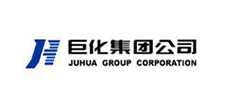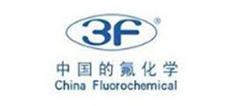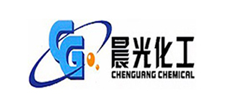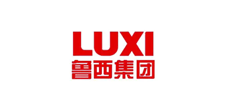
Focus on Fluorine containing new materials,Fluorine medicine,Pesticide intermediate,Production and sales
Changzhou Jiayuan Chemical Co., Ltd. was established in 2015, with its headquarters located in Jinsha Financial Center, Jintan District, Changzhou City, Jiangsu Province. The company adheres to technological innovation and has been committed to cooperating with well-known domestic fluorine chemical research institutes since 2015, focusing on the research and development of fluorine chemistry, the production of fluorine containing new materials, and international trade as an entity and trade enterprise.The company can stably achieve the supply of organic fluorine products: 3500 tons/year of trifluoroethylene (CTFE), 1000 tons/year of octafluorocyclobutane (C318), 2000 tons/year of OEM processing of polyfluoroethylene propylene (F46), 300 tons/year of OEM processing of hexafluoroethylene oxide, 300 tons/year of perfluorohexanoic acid, and 300 tons/year of ethyl difluorobromoacetate.The company can stably supply inorganic fluorine products: 6000 tons/year of electronic grade potassium fluoride, 1000 tons/year of electronic grade magnesium fluoride, 1000 tons/year of electronic grade lithium fluoride, 600 tons/year of toothpaste grade sodium fluoride, and 1500 tons/year of trifluoromethylbenzene.Through several years of continuous innovation and development, the company has entered a track of balanced development in the upstream and downstream of the fluorine chemical industry chain. The company has extensive cooperation with leading enterprises in the fluorite mining industry chain in Myanmar, Inner Mongolia, and Liaoning, forming a complete fluorite chemical industry chain based on fluorite.We have a professional sales team and technical service team, providing customers with high-quality fluorine chemical products, good technical support, and a sound after-sales service system. Adhering to the principle of "customer first, integrity first", we provide high-quality products and services and work hand in hand with customers. Welcome domestic and foreign enterprises/companies/institutions to establish long-term cooperative relationships with our company.






Sodium fluoride/SODIUM FLUORIDE(FNa)

Sodium fluoride/SODIUM FLUORIDE(FNa)
More +
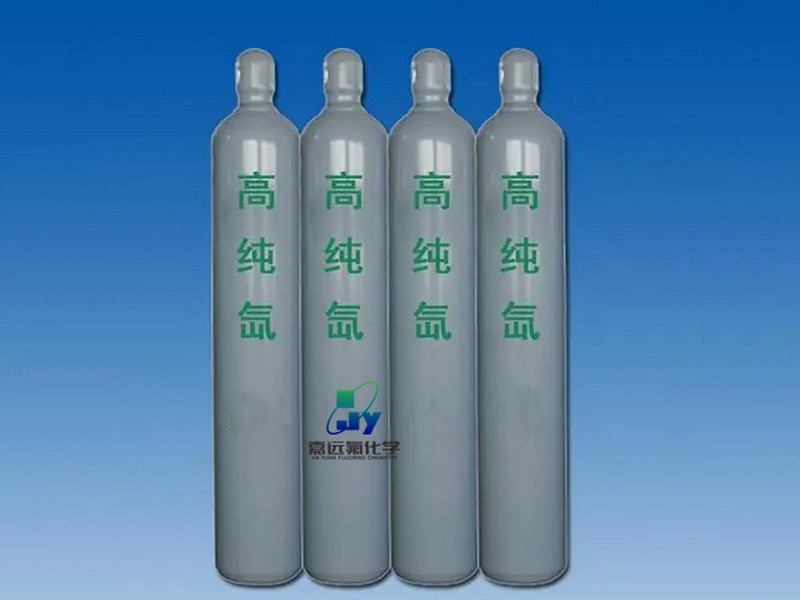
Xenon gas

Xenon gas
More +

Magnesium fluoride/magnesiumfluorure(F2Mg)

Magnesium fluoride/magnesiumfluorure(F2Mg)
More +
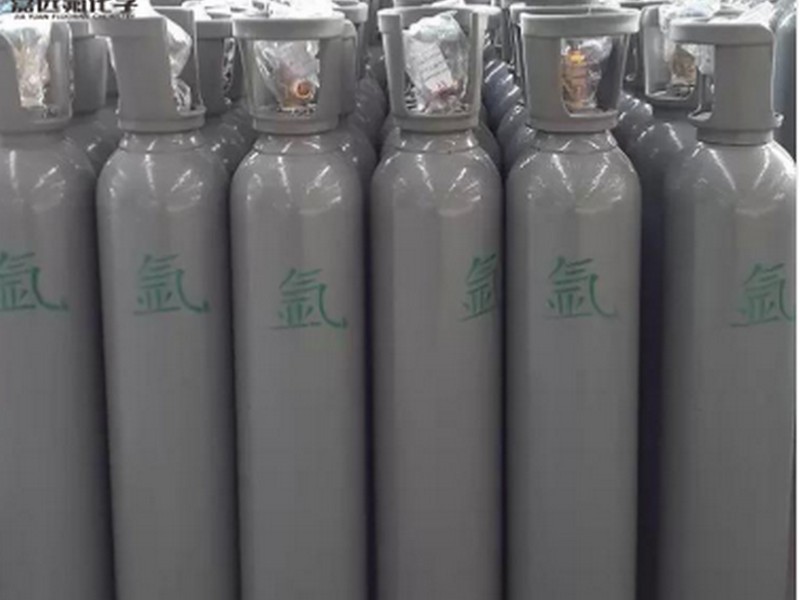
Liquid argon

Liquid argon
More +

Potassium fluoride/POTASSIUM FLUORIDE(FK)

Potassium fluoride/POTASSIUM FLUORIDE(FK)
More +
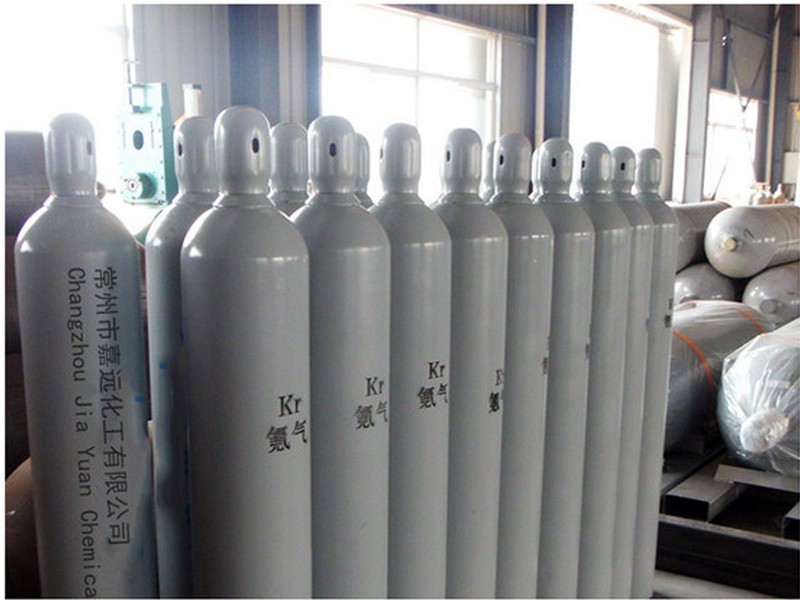
Krypton gas

Krypton gas
More +
cooperative partner
Create a better tomorrow with Jiayuan Chemical

Fluorite powder: After the price reached a high of nearly 10 years, the upward momentum is insufficient
Keywords: tight ore production, declining winter storage demandIn October 2023, fluorite powder continued to set new price highs in the past 10 years despite tight supply. With the increase in construction starts, prices have lacked upward momentum and have shown a downward trend in November. The good and bad market outlook will restrict each other, and the overall price fluctuation is expected to be relatively limited.
2023-11-20
[Fluorine knowledge] About the application and characteristics of fluorine rubber
Fluorine rubber refers to a synthetic polymer elastomer containing fluorine atoms on the carbon atoms of the main chain or side chain. It not only has good mechanical properties, but also has high resistance to high temperature, oil and various chemicals. Its characteristics and comprehensive performance are particularly excellent, so it has a wide range of applications, especially in the production of special sealing products. It is an indispensable material in modern aviation, missiles, rockets, aerospace and other science and technology and other industries (such as automobiles) .1. Structural characteristics and application fields of fluororubberBecause there is no unsaturated C=C bond structure in the main chain of polyolefin fluororubber (type 26 fluororubber, type 23 fluororubber) and nitroso fluororubber. Reduces the possibility of degradation and chain scission on the main chain due to oxidation and pyrolysis. The methylene group in vinylidene fluoride plays a very important role in the flexibility of the polymer chain. For example, fluorine rubber 23-21 and fluorine rubber 23-11 are composed of vinylidene fluoride and chlorotrifluoroethylene in a ratio of 7:3 respectively. And the ratio of 5:5, obviously, the former is softer than the latter.Whether it is vinylidene fluoride and chlorotrifluoroethylene, or the copolymers of the former and hexafluoropropylene, and their terpolymers with tetrafluoroethylene, they can be mainly crystalline or amorphous. This depends on how much of one monomer is involved when the other monomer is the main chain segment of the copolymer. Electron diffraction studies indicate that when the mole fraction of hexafluoropropylene in the vinylidene fluoride segment reaches 7%, or the mole fraction of vinylidene fluoride in the chlorotrifluoroethylene segment reaches 16%, the two copolymers still have and Its crystal structure is comparable to that of a homopolymer. However, when the mole fraction of hexafluoropropylene in the former increases to more than 15%, or the mole fraction of vinylidene fluoride in the latter increases to more than 25%, the crystal lattice is greatly destroyed, causing them to have an amorphous shape with mainly rubber properties. structure. This is due to the increase in the amount of the second monomer introduced, which destroys the regularity of its original molecular chain. Fluorine rubber can be used together with nitrile rubber, acrylic rubber, ethylene-propylene rubber, silicone rubber, fluorosilicone rubber, etc. to reduce costs and improve physical and mechanical properties and process performance.The earliest fluorine rubber was poly-2-fluoro-1,3-butadiene and its copolymer with styrene, propylene, etc., which was trial-produced by DuPont Company in the United States in 1948. Its performance is no better than that of chloroprene rubber and butadiene rubber. , and it is expensive and has no actual industrial value. In the late 1950s, the American Thiokol Company developed a binary nitroso fluororubber with good low-temperature performance and resistance to strong oxidants (N2O4). Fluorine rubber began to enter practical industrial applications. China has also developed a variety of fluororubbers since 1958, mainly polyolefin fluororubbers, such as type 23, 26, 246 and nitroso fluororubber; later, a newer variety of tetrapropylene fluororubber was developed , perfluoroether rubber, fluorophosphorus rubber. These fluorine rubber varieties are first based on the supporting needs of aviation, aerospace and other national defense and military industries, and are gradually promoted and applied to the civil industry sector. They have been used in modern aviation, missiles, rockets, aerospace navigation, ships, atomic energy and other technologies as well as automobiles, shipbuilding, chemistry, Petroleum, telecommunications, instruments, machinery and other industrial fields.Fluorine rubber is widely used in daily life, such as automotive parts, aviation and aerospace fields, mechanical seals, pumps, reactors, agitators, compressor casings, valves, various instruments and other equipment as valve seats. , valve stem packing, diaphragms and gaskets, as well as in the rubber sheet industry, semiconductor manufacturing industry and food and pharmaceutical industries.With the use of unleaded gasoline and electronic injection devices in automobiles, the structure and materials of fuel hoses have changed greatly. The inner rubber layer has been replaced by fluorine rubber instead of nitrile rubber. In order to reduce fuel penetration and further improve heat resistance, the inner rubber layer has been The rubber layer mostly adopts a composite structure, which is composed of fluorine rubber and chlorohydrin rubber or acrylate rubber. Since fluorine rubber is relatively expensive, the fluorine rubber layer is relatively thin, with a thickness of about 0.2 to 0.7 mm. This kind of structure fuel hose has become a mainstream product abroad. Our country has also developed this kind of hose with fluororubber as the inner layer, and it is used in Santana, Audi, Jetta, Fukang and other models of cars. In terms of automobile engines, gearboxes, and valve oil seals with high technical content, the materials selected are mainly fluorine rubber, hydrogenated nitrile rubber, etc.Fluorine rubber and silicone rubber composite oil seals have become the most commonly used engine crankshaft oil seals. The hydraulic system of loading and unloading trucks and the hydraulic system of large loading and unloading trucks work continuously for a long time, and the oil temperature and machine parts temperature rise rapidly. Ordinary rubber cannot meet their working requirements, and fluorine rubber products can meet various demanding requirements due to their excellent temperature resistance. technical requirements. As the automotive industry's requirements for reliability and safety continue to increase, the demand for fluororubber in the automotive industry has also shown a rapid growth trend.In addition to automotive industry applications, fluororubber seals are used in drilling machinery, oil refining equipment, natural gas and power plant desulfurization devices. They can withstand harsh conditions such as high temperature, high pressure, oil and strong corrosive media; in chemical production, fluororubber seals Parts are used in pumps and equipment containers to seal chemical substances such as inorganic acids and organic substances. In the petroleum and chemical industries, fluorine rubber sealing products are used in mechanical seals, pumps, reactors, agitators, compressor casings, valves, various instruments and other equipment. They are usually used as packing for valve seats, valve stems, and diaphragms. and gaskets. Fluorine rubber is one of the indispensable high-performance materials for modern aviation, missiles, rockets, aerospace navigation, ships, atomic energy and other science and technology. In recent years, new fluorine rubber products have been continuously developed in the aviation and aerospace fields. 2. Main properties of fluororubberFluorine rubber has unique properties, and the properties of its vulcanized rubber are described below.(1) Corrosion resistance: Fluorine rubber has the best corrosion resistance. Generally speaking, its stability against organic liquids (fuel oil, solvents, hydraulic media, etc.), concentrated acids (nitric acid, sulfuric acid, hydrochloric acid), high-concentration hydrogen peroxide and other strong oxidants is superior to other rubbers. .(2) Swelling resistance: Fluorine rubber has a high degree of chemical stability and has the best media resistance among all elastomers currently. Type 26 fluorine rubber is resistant to petroleum-based oils, diester oils, silicone oils, silicic acid oils, inorganic acids, most organic and inorganic solvents, drugs, etc., and is only not resistant to low-molecular ketones, ethers, Ester, not resistant to amines, ammonia, hydrofluoric acid, chlorosulfonic acid, and phosphoric acid hydraulic oils. The dielectric performance of type 23 fluorine rubber is similar to that of type 26, and it is more unique. Its resistance to strong oxidizing inorganic acids such as fuming nitric acid and concentrated sulfuric acid is better than that of type 26. It can be immersed in 98% HNO3 at room temperature. 27 Its volume expansion is only 13% to 15%.(3) Heat resistance and high temperature resistance: In terms of aging resistance, fluorine rubber is comparable to silicone rubber and better than other rubbers. Type 26 fluororubber can work at 250 ℃ for a long time and at 300 ℃ for a short time. Type 23 fluororubber still has high strength after aging at 200 ℃ × 1000 h, and can also withstand short-term high temperature of 250 ℃. The thermal decomposition temperature of tetrapropylene fluorine rubber is above 400 ℃ and can work at 230 ℃ for a long time. The performance changes of fluorine rubber at different temperatures are greater than those of silicone rubber and general-purpose butyl rubber. Its tensile strength and hardness both decrease significantly with the increase of temperature. The characteristics of the change of tensile strength are: below 150 ℃, with temperature It decreases rapidly with the increase of temperature, and decreases slowly with the increase of temperature between 150 and 260 ℃.The high temperature resistance of fluorine rubber is the same as that of silicone rubber, and it can be said to be the best among current elastomers. 26-41 fluorine rubber can be used for long-term use at 250 ℃ and short-term use at 300 ℃; 246 fluorine rubber has better heat resistance than 26-41. The physical properties of 26-41 after air thermal aging at 300 ℃ × 100 h are equivalent to those of type 246 after hot air aging at 300 ℃ × 100 h. Its elongation at break can be maintained at about 100%, and the hardness is 90 to 95 degrees. . Type 246 maintains good elasticity after hot air aging at 350°C for 16 hours, maintains good elasticity after hot air aging at 400°C for 110 minutes, and contains spray carbon black, thermal carbon black or carbon fiber after hot air aging at 400°C for 110 minutes. The elongation of the rubber increases by about 1/2 to 1/3, and the strength decreases by about 1/2, but still maintains good elasticity. Type 23-11 fluorine rubber can be used at 200 ℃ for a long time and at 250 ℃ for a short time.(4) Low temperature resistance: The low temperature performance of fluororubber is not good, which is due to its own chemical structure, such as the Tg of 23-11 type > 0 ℃. The low-temperature properties of fluororubber actually used are usually expressed by brittle temperature and compression cold resistance coefficient. The formula of the rubber compound and the shape of the product (such as thickness) have a greater impact on the brittleness temperature. If the amount of filler in the formula increases, the brittleness temperature will deteriorate sensitively. As the thickness of the product increases, the brittleness blending degree will also deteriorate sensitively. The low-temperature resistance of fluorine rubber generally allows it to maintain elasticity at a limit temperature of -15 to 20 ℃. As the temperature decreases, its tensile strength increases and appears strong at low temperatures. When used as seals, low temperature seal leakage problems often occur. Its brittleness temperature changes with the thickness of the sample. For example, the brittleness temperature of type 26 fluororubber is -45 ℃ when the thickness is 1.87 mm, -53 ℃ when the thickness is 0.63 mm, and -69 ℃ when the thickness is 0.25 mm. The brittleness temperature of its standard sample type 26 fluororubber is -25~-30 ℃, the brittleness temperature of type 246 fluororubber is -30~-40 ℃, and the brittleness temperature of type 23 fluororubber is -45~-60 ℃.(5) Resistance to superheated water and steam: The stability of fluororubber against the action of hot water not only depends on the body material, but also on the combination of the rubber. For fluorine rubber, this performance mainly depends on its vulcanization system. Peroxide vulcanization systems are better than amine and bisphenol AF vulcanization systems. The performance of type 26 fluorine rubber using an amine vulcanization system is worse than that of general synthetic rubber such as ethylene-propylene rubber and butyl rubber.(6) Compression deformation performance: Compression deformation is its key performance when fluororubber is used for sealing at high temperatures. The reason why Viton type fluororubber has been widely used is inseparable from its improvement in compression deformation. It is an important performance that must be controlled as a sealing product. The compression deformation performance of type 26 fluororubber is better than that of other fluororubbers, which is one of the reasons why it is widely used. Its compression deformation appears to be very large in the temperature range of 200 to 300 ℃. However, in the 1970s, the American DuPont Company improved it and developed a low compression deformation rubber compound (Viton E-60C), which was improved from a raw rubber variety (Viton A to Viton E-60) and a vulcanization system. The selection (from amine vulcanization to bisphenol AF vulcanization) has been improved, which makes the fluorine rubber have better compression deformation when sealed for a long time at a high temperature of 200 ℃. Under the condition of long-term storage of 149 ℃, the fluorine rubber has better The seal retention rate is the best among all types of rubber.(7) Weathering resistance and ozone resistance: Fluorine rubber has excellent weathering resistance and ozone resistance. According to reports, the performance of VitonA developed by DuPont is still satisfactory after 10 years of natural storage, and there is no obvious cracking after 45 days in air with an ozone volume fraction of 0.01%. Type 23 fluororubber also has excellent weather aging resistance and ozone resistance.(8) Mechanical properties: Fluorine rubber generally has high tensile strength and hardness, but poor elasticity. The general strength of type 26 fluorine rubber is between 10 and 20 MPa, the elongation at break is between 150 and 350%, and the tear resistance is between 3 and 4 kN/m. The strength of type 23 fluorine rubber is between 15.0 and 25 MPa, the elongation is between 200% and 600%, and the tear resistance is between 2 and 7 MPa. Generally, fluorine rubber has a large compression deformation at high temperatures. However, if compared under the same conditions, such as from the compression deformation of the same time at 150 ℃, both butadiene and chloroprene rubber are larger than type 26 fluorine rubber, and type 26 The compression deformation of fluorine rubber at 200 ℃ × 24 h is equivalent to the compression deformation of butadiene rubber at 150 ℃ × 24 h.(9) Electrical properties: The electrical insulation properties of fluororubber are not very good and are only suitable for use under low frequency and low voltage. Temperature has a great influence on its electrical properties. When it rises from 24 ℃ to 184 ℃, its insulation resistance drops 35,000 times. The electrical insulation properties of type 26 fluororubber are not very good and are only suitable for low-frequency and low-voltage applications. Temperature has a great influence on its electrical properties, that is, as the temperature increases, the insulation resistance decreases significantly. Therefore, fluororubber cannot be used as an insulating material at high temperatures. The type and amount of fillers have a great influence on the electrical properties. Precipitated calcium carbonate gives the vulcanized rubber higher electrical properties, while other fillers have slightly worse electrical properties. As the amount of fillers increases, the electrical properties decrease.(10) High vacuum resistance: Fluorine rubber has the best vacuum resistance. This is because fluororubber has a small outgassing rate and a very small amount of gas volatilization under high temperature and high vacuum conditions. Type 26 and 246 fluororubber can be used in ultra-high vacuum situations of 133×10-9 ~ 133×10-10 Pa, and are important rubber materials in spacecraft. The air permeability of fluorine rubber is the lowest among rubbers, similar to butyl rubber and nitrile rubber. The addition of fillers can reduce the air permeability of vulcanized rubber, and the effect of barium sulfate is more significant than that of medium particle thermal carbon black (MT). The gas permeability of fluororubber increases with temperature. The solubility of gas in fluororubber is relatively large, but the diffusion rate is very small, which is beneficial to application under vacuum conditions. The solubility of fluorine rubber to gas is relatively large, but the diffusion rate is relatively small, so the overall breathability is also small. According to reports, the breathability of type 26 fluororubber to oxygen, nitrogen, helium, and carbon dioxide gases at 30°C is equivalent to butyl rubber and butyl rubber, and better than chloroprene and natural rubber. In fluorine rubber, the addition of fillers fills the gaps inside the rubber, thereby reducing the air permeability of the vulcanized rubber, which is very beneficial for vacuum sealing.(11) Flame resistance: The flame resistance of rubber depends on the halogen content in the molecular structure. The more halogen content, the better the flame resistance. Fluorine rubber can burn when in contact with flame, but will automatically extinguish after leaving the flame, so fluorine rubber is a self-extinguishing rubber.(12) Radiation resistance: Fluorine rubber is a material that is resistant to moderate doses of radiation. The radiation effect of high-energy rays can cause cracking and structuring of fluorine rubber. The radiation resistance of fluororubber is relatively poor among elastomers. Type 26 rubber shows a cross-linking effect after radiation, and type 23 fluororubber shows a cracking effect. The performance of type 246 fluorine rubber changes drastically under normal temperature radiation in the air at a dose of 5×107 Lun. Under the condition of 1×107 Lun, the hardness increases by 1 to 3, the strength decreases by less than 20%, and the elongation decreases by 30% to 50%. Therefore, it is generally believed that type 246 fluororubber can withstand 1 × 107 liters, and the limit is 5 × 107 liters. 2023-11-20
Which fluorine chemical products are more promising in the future?
I believe you have seen and heard many PVDF and lithium hexafluorophosphate projects in recent years. Some are built by fluorine chemical companies, and some are cross-border investments by outside companies. The successive commissioning of these projects has made the supply and demand relationship of PVDF and lithium hexafluorophosphate rapid. Changes have occurred, and its market prices have also fluctuated sharply, and the industry sentiment is very pessimistic.However, there are a wide variety of fluorine chemical products. In addition to fluorine-containing lithium battery materials, many other products also have excellent application prospects, including hexafluorobutadiene, chlorine trifluoride, carbonyl fluoride, and fluorine-containing polyimide. , polychlorotrifluoroethylene, fusible polytetrafluoroethylene, perfluorosulfonic acid resin, hydrofluoroether, perfluoropolyether, ethylene-tetrafluoroethylene copolymer, etc. This article will take you to learn about some of the more promising fluorine Chemical Products.01 HexafluorobutadieneHexafluorobutadiene, also known as perfluorobutadiene, hexafluoro-1,3-butadiene, or HFBD for short, is a double-bonded, fully fluorinated compound with a molecular formula of C4F6. Hexafluorobutadiene is an important raw material for synthetic resins and fluorine-containing substances. It can also be used as an etching gas in the semiconductor industry, with the advantages of good selectivity and high precision.In addition, the GWP of hexafluorobutadiene is only 0.004, and its lifetime in the atmosphere is less than 2 days. It has a very small greenhouse effect. It is a green, environmentally friendly and very marketable perfluoride gas. In recent years, hexafluorobutadiene has become one of the most likely candidates to replace traditional fluorine-containing etching gases due to its excellent etching selectivity, high precision, and easy decomposition in the atmosphere.Hexafluorobutadiene is one of the new generation of fluorine-containing etching gases currently discovered that can meet the development requirements of etching technology and minimize its impact on the environment. It has broad application prospects. However, the current high-purity hexafluorobutadiene market is still occupied by foreign companies such as Showa Denko, Hosei Chemicals, Merck Group, Linde Gas, and Air Liquide. my country's market demand mainly relies on imports.In recent years, in the face of increasingly strict semiconductor blockades in Western countries and the growing domestic market demand for fluorine-containing special gases, domestic companies have accelerated their deployment of hexafluorobutadiene, and some companies have broken through industrialization barriers, including China Juxin, Sinochem Blue Sky, CSSC Special Gas, Jinshi Fluorine Industry, Nanda Optoelectronics, etc.02 fusible polytetrafluoroethylenePFA is a copolymer of tetrafluoroethylene (TFE) and perfluoroalkyl vinyl ether (PAVE). Because its properties are similar to those of polytetrafluoroethylene, and it can be processed using thermoplastic resin processing methods, it is also called fusible. Polytetrafluoroethylene.1~10% perfluoroalkyl vinyl ether in the PFA molecule significantly improves the flexibility of the polymer chain and reduces the crystallinity, giving PFA good thermoplasticity and overcoming the shortcomings of PTFE being difficult to process. It can be used with general thermoplastics It is processed by the molding process. Its long-term use temperature is the same as PTFE, and its mechanical properties at high temperatures are better than PTFE.At the same time, PFA has the excellent chemical corrosion resistance of PTFE, excellent heat resistance, low friction coefficient, self-lubricating, flame retardant, waterproof and other properties. It can be made into anti-corrosion coatings, anti-aging coatings, special filter fibers, reaction Kettle linings, pipe linings, optical cable sheaths, aerospace equipment, etc. are widely used in construction, chemical industry, machinery, electrical, aerospace, medical and many other fields.At present, the main overseas suppliers of PFA are Chemours, Solvay, Daikin, 3M, AGC, etc., with a market share of nearly 90%. There are relatively few companies producing PFA in China, including Dongyue Group, Yonghe Group, Juhua Group, etc. 03 Perfluorosulfonic acid resinIn recent years, benefiting from multiple factors such as policy support, technological progress, cost reduction and market demand, the hydrogen fuel cell market has shown rapid growth both at home and abroad, which will drive rapid growth in demand for related materials.Proton exchange membrane is one of the core materials of hydrogen fuel cells. The performance of the membrane directly determines the performance and service life of hydrogen fuel cells. According to the fluorine content, proton exchange membranes can be divided into perfluorinated proton exchange membranes such as perfluorosulfonic acid membranes, partially fluorinated proton exchange membranes such as polyvinylidene fluoride radiation graft membranes, and fluorine-free proton exchange membranes such as polybenzimidazole membranes.At present, perfluorosulfonic acid proton exchange membrane is the only proton exchange membrane that has been successfully commercialized and actually used in the market. The raw materials for preparing perfluorosulfonic acid resin are mainly tetrafluoroethylene, perfluorosulfonyl vinyl ether monomer (PSVE), etc., whether it is the preparation of PSVE, the polymerization of perfluorosulfonic acid resin, or the film formation of perfluorosulfonic acid resin. There are extremely high technical barriers, so there are not many companies with the production capacity of perfluorosulfonic acid resin globally, and the production capacity is mainly concentrated in companies such as Chemours, Solvay, 3M, and Gore of the United States.My country's research on perfluorosulfonic acid resin started not late. In the 1970s, the Shanghai Institute of Organic Chemistry, Chinese Academy of Sciences, carried out research on the synthesis and polymerization of important monomers of perfluorosulfonic acid resin, and even carried out research on polymer membranes. Research on modification has been carried out, but unfortunately, large-scale production has not yet been achieved.Domestic perfluorosulfonic acid resin manufacturers include Dongyue Group, Shanghai Sanaifu, Juhua Group, Suzhou Kerun, etc. However, except for Dongyue Group, most other companies do not have the capacity to supply perfluorosulfonic acid resin in batches. Therefore, our country The supply capacity of perfluorosulfonic acid resin is insufficient, and market demand relies heavily on imports. In the future, there will be greater room for domestic substitution of perfluorosulfonic acid resin.04 Ethylene-tetrafluoroethylene copolymerETFE is the strongest fluoroplastic so far. While maintaining the good heat resistance, chemical resistance and electrical insulation properties of polytetrafluoroethylene, its radiation resistance and mechanical properties have been greatly improved, and its tensile strength has been greatly improved. It can reach 50MPa, which is nearly twice that of polytetrafluoroethylene. More importantly, its processing performance is greatly improved, especially its outstanding adhesion to the metal surface, which enables the tight lining process of fluoroplastics and steel to be truly realized.ETFE not only has excellent impact resistance, electrical conductivity, thermal stability and chemical corrosion resistance, but also has high mechanical strength and good processing performance. It is widely used in chemical industry, electronic communications, equipment manufacturing, aerospace and other fields.For a long time, ETFE has been monopolized by foreign manufacturers such as AGC, Daikin, Chemours, and 3M. Chinese scientists began research and development in the 1970s, but have not made substantial progress. Domestic demand for ETFE resin products is almost 100% dependent on it. Imports, and foreign countries have implemented embargoes on special ETFE resins needed in my country's Military Industry and National Defense and large aircraft fields, causing ETFE resin to become an important bottleneck restricting the application and development of my country's special fields.At present, domestic manufacturers have achieved zero breakthroughs and are increasing their ETFE production capacity layout. Companies with production capabilities mainly include Dongyue Group, Juhua Co., Ltd., etc.05 Fluorinated polyimideFluorinated polyimide (FPI) refers to a rigid polymer with a highly regular chemical structure containing imide rings in the main chain. It is produced by melt polycondensation or solution polycondensation reaction of fluorinated dianhydride and fluorinated diamine. Polyamic acid (FPAA) is a polymer material obtained by imidization. Compared with traditional PI, FPI inherits the characteristics of traditional PI such as high strength, high temperature resistance, deformation resistance, and bending resistance, and has the characteristics of good transparency, good electrical insulation, and low dielectric constant.According to the chemical structure, FPI can be divided into diphenyl ether type FPI, benzene type FPI, benzophenone type FPI, and biphenyl type FPI; according to the performance, it can be divided into fluorine-containing polyetherimide (FPEI), fluorine-containing polyamide imide Amine (FPAI), etc.; according to the fluorine-containing group, it can be divided into two types: fully fluorinated PI and partially fluorinated PI.In recent years, FPI has been applied in high-end fields including flexible OLED displays and electronic device cooling. Market demand continues to rise. However, FPI core technology is still concentrated in countries such as the United States and Japan. About 90% of the world's FPI is produced in Japan. FPI production technology is complex and requires many types of raw materials. Currently, domestic monomer raw materials with lower technical barriers, such as biphenyltetracarboxylic acid di-BPDA and pyromellitic acid dianhydride PMDA, have been produced on a large scale; for more special single , such as hexafluorodianhydride 6FDA, has gradually broken the monopoly of foreign companies. However, few companies have production capabilities for FPI resin. Some companies, including Shandong Zhongrou and Sanaifu, are promoting FPI industrialization.06 HydrofluoroetherHydrofluoroethers are compounds composed of hydrogen, fluorine, oxygen and carbon atoms. They have an ether structure. Their ozone depletion potential (ODP) is zero, their global warming potential coefficient (GWP) is low, and their atmospheric residence time is very short. They are considered ideal CFCs. alternatives. In addition to excellent environmental properties, hydrofluoroethers also have the best thermal and chemical stability, moderate solubility, low toxicity, non-corrosive, non-flammable, non-smoking, good material compatibility, etc., and are easy to store and transportation.Due to its excellent insulation, chemical inertness, low surface tension, good volatility, and good compatibility with organic solvents, hydrofluoroether has excellent compatibility with component materials used in semiconductor, chip, and liquid crystal manufacturing industries, so it is widely used in electronics. Cleaning agent is the original use of hydrofluoroether, and it is also one of the main applications at present. In addition, hydrofluoroether can also be used in coolant, anti-fingerprint agent diluent, foaming agent and other fields.At present, domestic companies with hydrofluoroether production capabilities mainly include Dongyue Group, Juhua Co., Ltd., Shandong Huafu, Quanzhou Yuji, Zhejiang Noah, etc.07 Ethylene-chlorotrifluoroethylene copolymerECTFE is a copolymer of ethylene and chlorotrifluoroethylene, which has extraordinary corrosion resistance to most inorganic and organic chemicals and organic solvents. Until now, except for chlorinated molten alkali or hot amines (such as aniline, dimethylamine), no solvent can corrode ECTFE below 120°C.Compared with other thermoplastics, ECTFE's resistance to chlorine and chlorine derivatives at high temperatures is particularly outstanding. ECTFE has excellent corrosion resistance, extremely low permeability, excellent electrical properties and extremely smooth surface, and can be used safely in temperatures ranging from low to 149°C.ECTFE not only has outstanding impact resistance, but also is a tough material with considerable mechanical strength. The surface of ECTFE products, similar to glass, prevents the growth of microorganisms, providing obvious hygienic advantages. Due to these excellent properties, ECTFE is widely used in chemical industry, petroleum drainage, washing, sewage treatment systems, chemical distribution systems and chemical cleaning systems of equipment.It is understood that currently only Solvay is producing ECTFE in the world, and there is basically no large-scale production capacity in China.08 2,3,3,3-TetrafluoropropeneR1234yf, also known as HFO-1234yf, the chemical name is 2,3,3,3-tetrafluoropropene, has zero ODP and low GWP, and has good refrigeration effect. It is one of the most popular ODS substitutes and is known as As the fourth generation refrigerant with the most commercial prospects, it is currently mainly used in the field of automotive air conditioning, and the market demand continues to expand.Prior to this, the refrigerant for automobile air conditioners mainly used R134a. R134a is a third-generation hydrofluorocarbon (HFCs) refrigerant with zero ODP, but has a high GWP and obvious greenhouse effect. As environmental protection requirements increase, it will be gradually phased out. Compared with R134a, R1234yf has lower GWP, similar physical and chemical properties, and the same atmospheric decomposition products. It can be used in the original vehicle air conditioning system. It is the most potential new refrigerant product to replace R134a and has been used in many cars.European regulations have banned the use of refrigerants with a GWP >150 in new cars produced and sold within the country since 2017. R134a has been banned in European automobiles.2023-11-20
[Rare gases morning reference]: Morning tips for rare gases market
1. Points of concern1. The trading atmosphere of helium-controlled gas declined, but the trading atmosphere of helium-controlled gas in Inner Mongolia was acceptable.2. The trading atmosphere in the xenon market is acceptable, but be wary of downside risks.3. The trading volume in the krypton gas market is slow and the trading volume is moving downward. The neon market atmosphere is acceptable.4. The total helium import volume in 2022 is 4046.4 tons, +8.9% year-on-year. Core logic: The helium market atmosphere is average, and the tight supply of imported goods has eased. The xenon atmosphere has improved, and downstream buyers are cautious in purchasing goods. The demand in the neon market is still poor, and the short-term adjustment is weak. The krypton market is supported by individual purchases, and the short-term price may be stable and adjusted.2. Market outlook The trading atmosphere in the helium market is average, and the market is mainly stable and adjusted; the xenon market atmosphere is acceptable, but high-price transactions are slightly stressful; the demand for neon gas is poor, and the transaction atmosphere is weak; the krypton gas market support has declined. In the short term, the xenon market may be subject to steady adjustments, while the helium market may be weak and subject to steady adjustments.2023-10-10
Fluorine chemical raw materials: analysis of the third quarter
Introduction: In the third quarter of 2023, the prices of fluorite powder and anhydrous hydrofluoric acid have stopped falling and risen. Tight supply and rising costs are the main factors supporting prices. In the fourth quarter, when fluorine chemical companies have good expectations for winter storage of raw materials and terminal refrigerant prices, the market still has room for strong operation. The market for fluorochemical raw materials rebounded after falling in the third quarter of 2023. At the beginning of the third quarter, the terminal refrigerant market demand was weak, and prices fluctuated and declined. This was transmitted from the bottom up to the raw material market, and prices continued to decline. Since mid-to-late August, under the influence of the continued tight supply of fluorite powder, downstream fluorine chemical companies have been stocking up on raw materials in advance. As the demand for fluorite powder continues to increase, prices have taken the lead in rising, and the driving force of raw materials on the market has increased. Promote the improvement of the industrial chain market from top to bottom.The upward trend in the third quarter has ended, and the market is also expected to be better in the fourth quarter.At the end of September, the fluorine chemical raw material market continued to trend upward, and the market environment was still supportive of prices. On the one hand, from a supply perspective, fluorine chemical companies have winter storage of raw material fluorite powder at the end of the third quarter and the beginning of the fourth quarter. The monthly procurement volume will increase to more than 10,000 tons to prepare for winter production. Driven by demand, the price of fluorite powder will increase. There has been a significant increase. Judging from the supply and demand situation in the fluorspar market during the year, mine operations are low. Affected by the shortage of ore, the operation of dressing plants is less than 40%, and the inventory is small. It is common to determine sales based on production. It is expected that the tight supply of fluorspar powder will not be alleviated in the fourth quarter, and prices are still likely to continue to rise in the future, perhaps until around November. From the perspective of anhydrous hydrofluoric acid, due to the tight supply of raw material fluorite powder, the start-up of some production companies was restricted at the end of the third quarter, and the market start-up remained at around 55%. The market supply was tight, and production companies were obviously hesitant to stock. Coupled with the increase in the price of fluorite powder, the market support for anhydrous hydrofluoric acid is relatively strong, and it is expected to have a synchronized upward trend with the market price of raw material fluorite powder.On the other hand, as of mid-September, the price of downstream refrigerants has been rising steadily, and the refrigerant HFC-134a has continued to hit new highs in the new year. At the same time, as the implementation date of HFCs quotas in 2024 approaches, the overall situation of limited supply in the future market will be determined. Industry players are full of expectations for a better market, and the low-price reluctance to sell at the production end is obvious. The bullish expectations in the HFCs market will provide positive support to the market ahead of the implementation of quotas. With the psychological expectation that the terminal market will improve, it will also provide good support for the raw material market, and the market outlook is still optimistic about the fourth quarter market.2023-10-10








